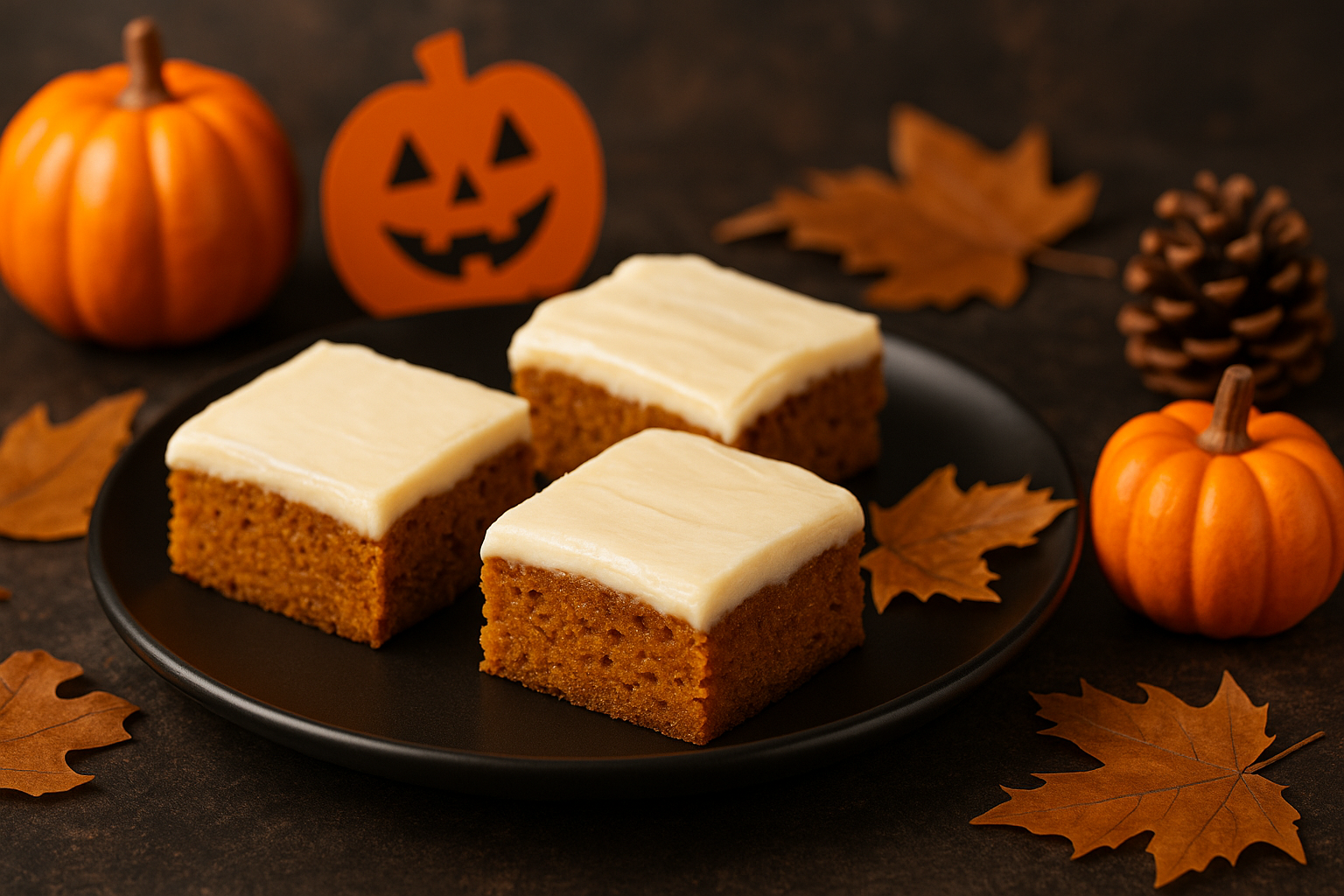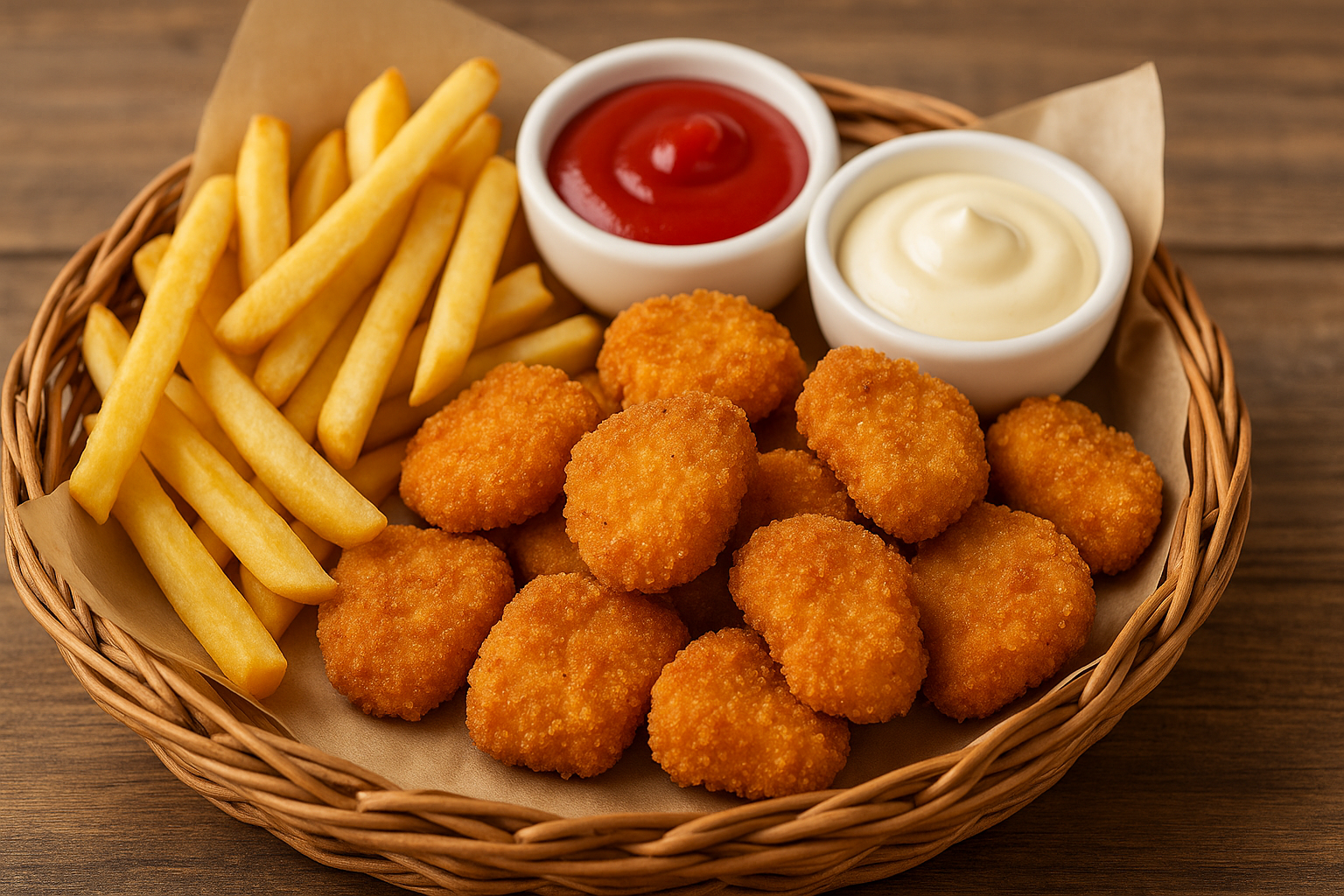There is something comforting about a bowl of soup that is packed with vegetables, beans, and pasta all swimming in a rich tomato broth. That is exactly what you get with minestrone soup. It is cozy, hearty, and versatile enough to work year-round. And here is the best part: once you learn the basics, you can tweak the flavors and textures until it feels like your own signature recipe.
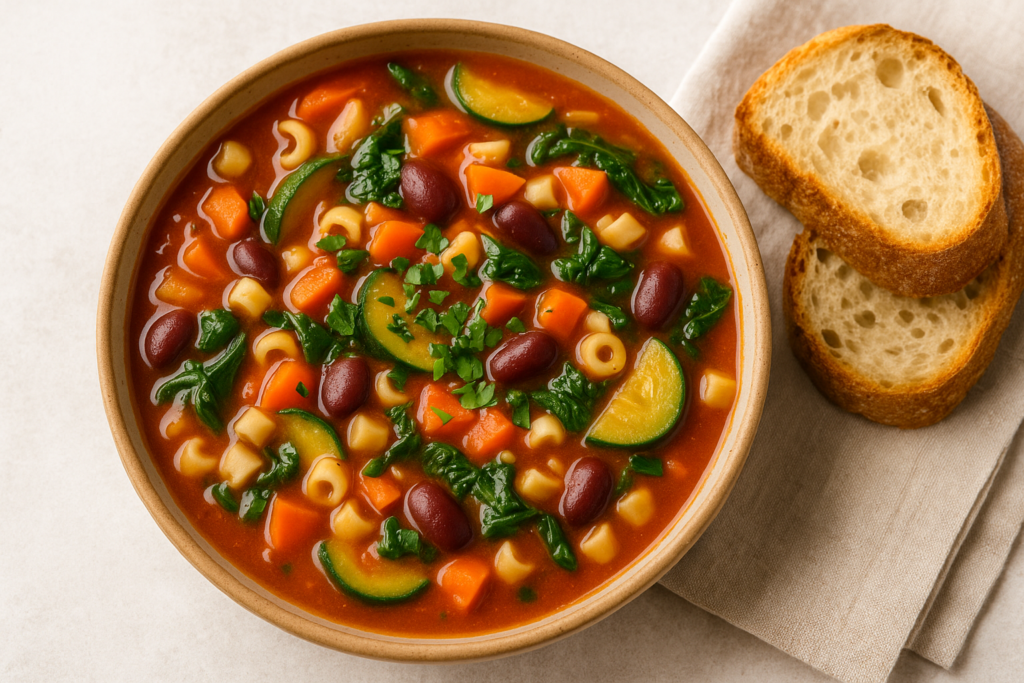
If you’ve tried the Olive Garden minestrone soup, you already get why people love it. It’s filling, flavorful, and feels like a complete meal in one bowl. The good news is you don’t have to wait for a restaurant visit. Making it at home is pretty simple, and the best part is you get to decide what goes in the pot.
In this post, I’ll walk you through what makes minestrone stand out, share a few easy tricks for building more flavor, and give you a recipe you can cook up in your own kitchen tonight.
What Is Minestrone Soup?
So, what is minestrone soup exactly? At its heart, minestrone is a traditional Italian vegetable soup. It was originally created as a way to use whatever vegetables were in season or leftover. That is why you will find so many different versions across Italy—and now across the world.
The classic foundation includes:
- Aromatic vegetables like onion, carrot, and celery.
- A tomato-based broth.
- Beans for protein and texture.
- Pasta (sometimes rice) to make it hearty.
From there, the combinations are endless. Some versions include zucchini, spinach, or cabbage. Others skip the pasta and add potatoes instead. The flexibility is part of what makes this soup so loved—it adapts to your pantry and your taste.
Why You’ll Love This Minestrone Soup Recipe
- Customizable: Change the veggies, beans, or pasta based on what you have.
- Healthy: Packed with fiber, vitamins, and plant-based protein.
- Family-friendly: Kids love the small pasta shapes and the cozy flavor.
- Budget-friendly: It is a great way to stretch ingredients and still get a filling meal.
- Restaurant quality: Yes, you can make your own version of Olive Garden minestrone soup at home.
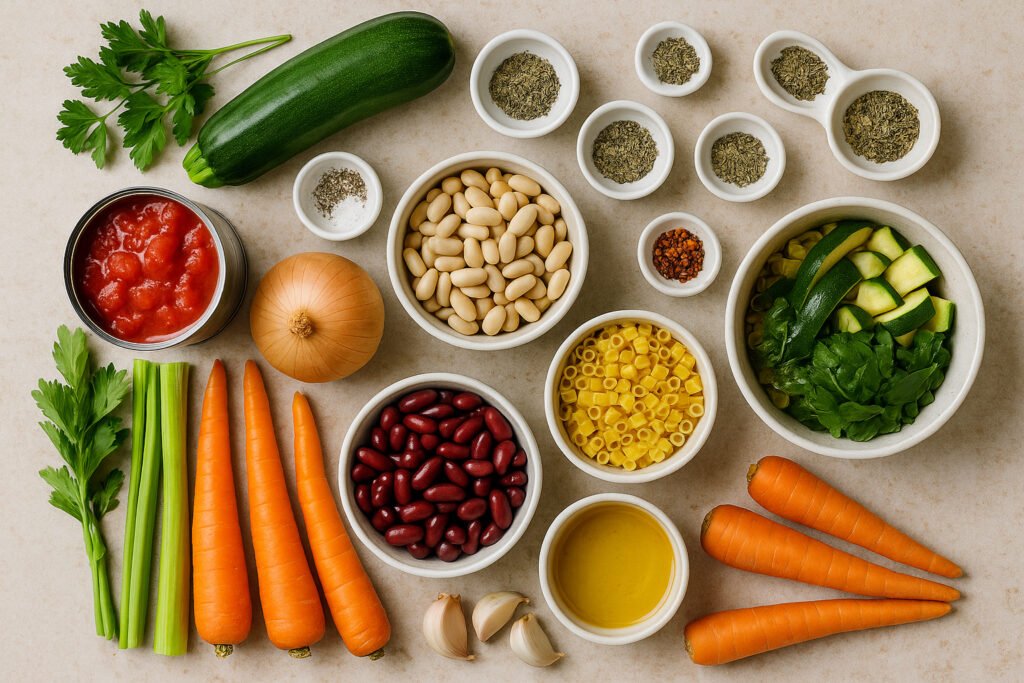
Ingredients You’ll Need
Here’s a shopping list for a classic version inspired by both homemade recipes and the Olive Garden minestrone soup recipe. Serves about 6–8.
- 2 tablespoons olive oil
- 1 medium onion, diced
- 2 medium carrots, diced
- 2 celery ribs, diced
- 3 garlic cloves, minced
- 1 medium zucchini, chopped
- 1 cup green beans, trimmed and cut into 1-inch pieces
- 1 can (14 oz) diced tomatoes
- 1 can (15 oz) kidney beans, rinsed and drained
- 1 can (15 oz) cannellini beans, rinsed and drained
- 6 cups vegetable broth (or chicken broth for non-vegetarian)
- 1 cup small pasta (ditalini, elbow, or small shells)
- 2 cups baby spinach or chopped kale
- 1 teaspoon dried oregano
- 1 teaspoon dried basil
- ½ teaspoon thyme
- Salt and black pepper to taste
- Fresh parsley, chopped (for garnish)
- Grated Parmesan (optional, for serving)
How to Make Minestrone Soup Recipe Step by Step
Step 1. Build the base
Heat olive oil in a large pot over medium heat. Add onion, carrot, and celery. Cook until softened and fragrant, about 5 minutes. Stir in garlic and cook for another minute.

Step 2. Add the vegetables
Stir in zucchini and green beans. Cook for a few minutes so they start to soften.
Step 3. Create the broth
Add the diced tomatoes (with their juice), broth, kidney beans, and cannellini beans. Sprinkle in oregano, basil, thyme, salt, and pepper. Stir everything together and bring it to a boil.
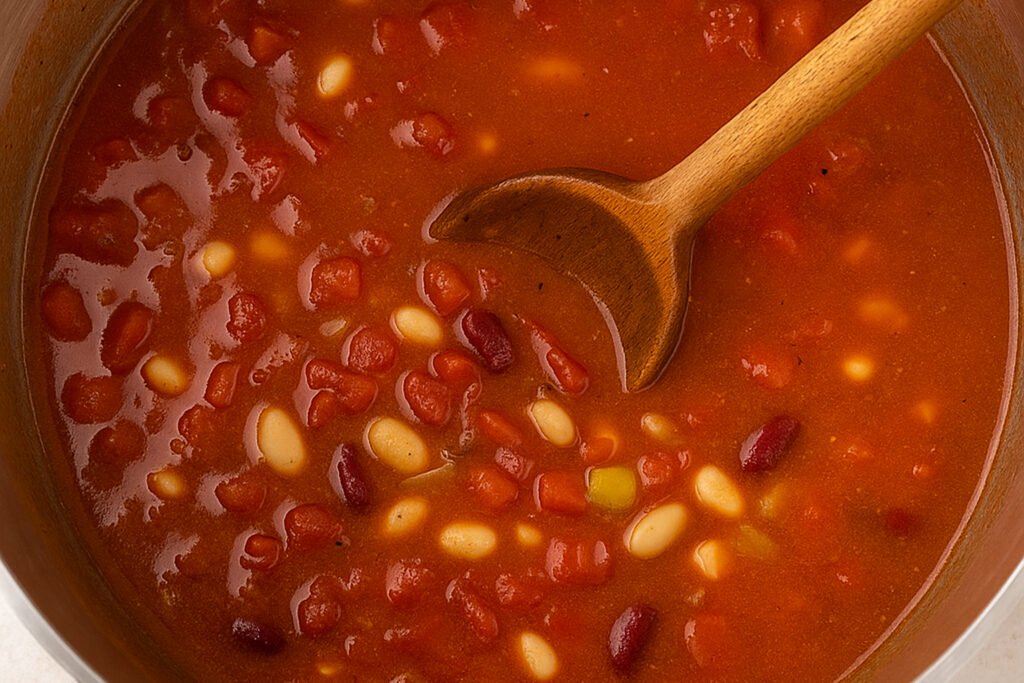
Step 4. Simmer
Lower the heat and let the soup simmer for about 20 minutes. This helps the flavors come together.
Step 5. Add pasta
Stir in the pasta and cook until just tender. Be careful not to overcook—it will keep cooking in the hot soup.
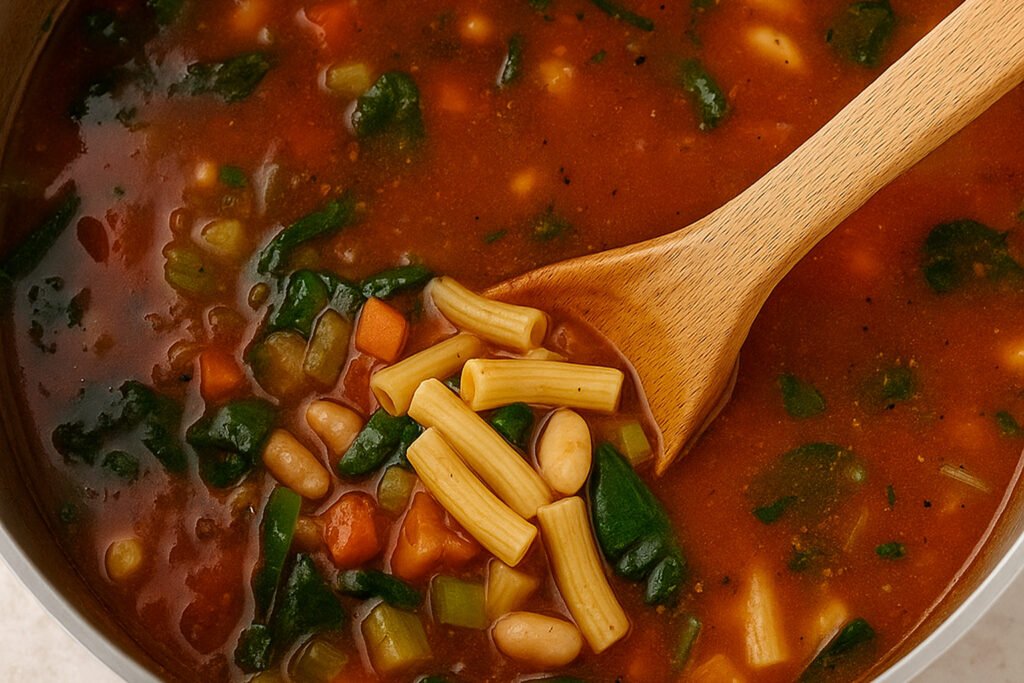
Step 6. Finish with greens
Once the pasta is done, add spinach or kale. Stir until wilted. Taste and adjust seasoning with more salt, pepper, or herbs.
Step 7. Serve
Ladle into bowls, top with fresh parsley, and a sprinkle of Parmesan if you like. Serve hot with crusty bread.
Tips for Making Minestrone Soup Taste Amazing
- Use fresh herbs if you can: A little fresh basil or parsley at the end brightens the soup.
- Cook pasta separately if making ahead: This prevents it from getting mushy when reheating.
- Don’t skip the simmer: Letting it bubble gently for 15–20 minutes deepens the flavor.
- Add a Parmesan rind: If you eat dairy, toss in a rind while simmering for extra richness.
- Customize the beans: Try chickpeas, navy beans, or even black beans.
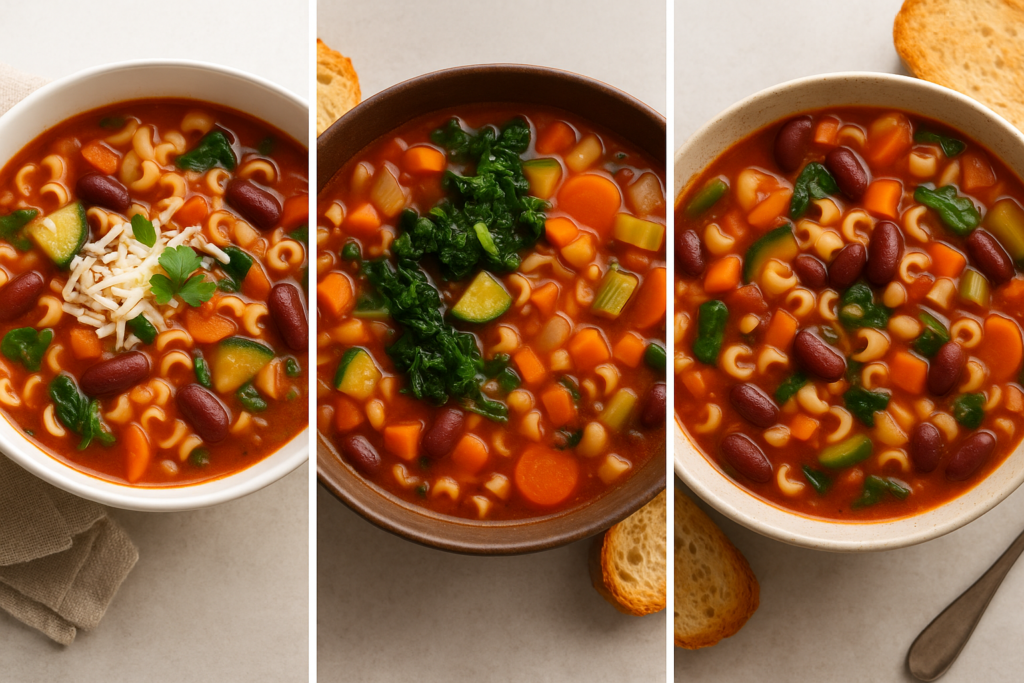
Variations You’ll Want to Try
- Olive Garden Minestrone Soup Copycat
If you love minestrone soup Olive Garden style, stick with zucchini, green beans, spinach, and ditalini pasta. It is simple but spot-on. - Summer Minestrone
Use corn, zucchini, and fresh basil. Light and bright. - Winter Minestrone
Swap in cabbage, potatoes, and butternut squash for a heartier bowl. - Protein boost
Add cooked chicken or turkey sausage if you want extra protein without losing the Italian vibe.
Serving Suggestions
Minestrone is practically a full meal on its own, but you can pair it with:
- Garlic bread or focaccia.
- A crisp green salad.
- A glass of red wine for a classic Italian feel.
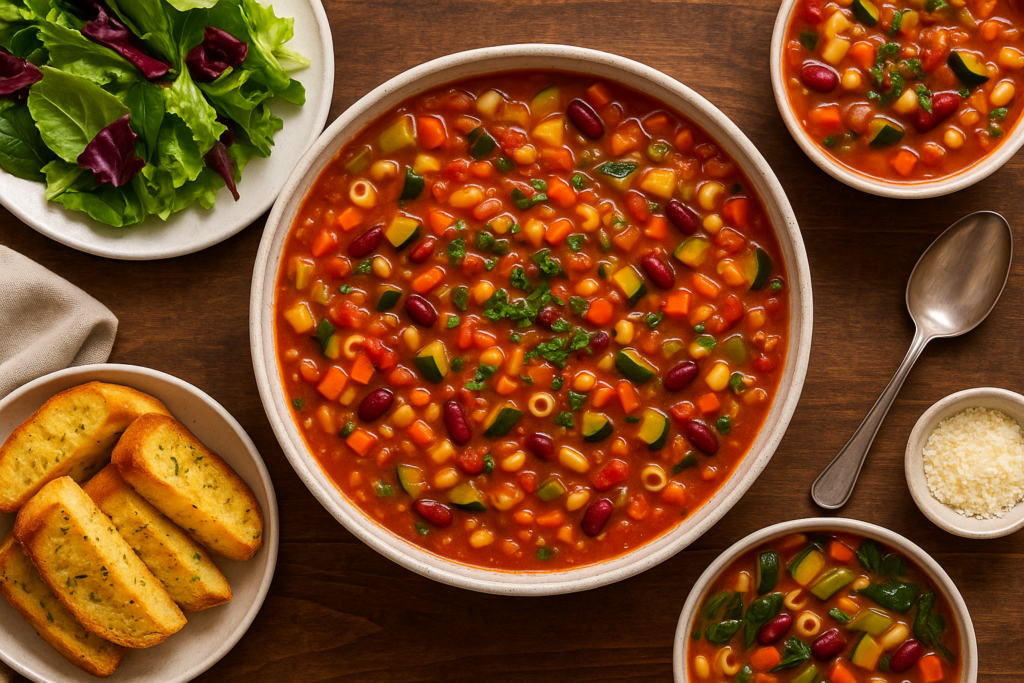
Final Thoughts
What I like about minestrone is that there really isn’t a single right way to do it. You learn the basics, and after that it’s fair game. Some days I throw in kale and extra beans, other times I keep it simple like the Olive Garden minestrone soup with zucchini and spinach. It depends on what’s in the fridge and honestly, what mood I’m in.
Once you make it a couple of times, you stop asking how do you make minestrone soup and just start cooking. It becomes second nature.
Grab a pot, chop up whatever vegetables you find in the kitchen, and just make a batch. It probably won’t taste the same each time, and honestly, that’s the charm of minestrone.




